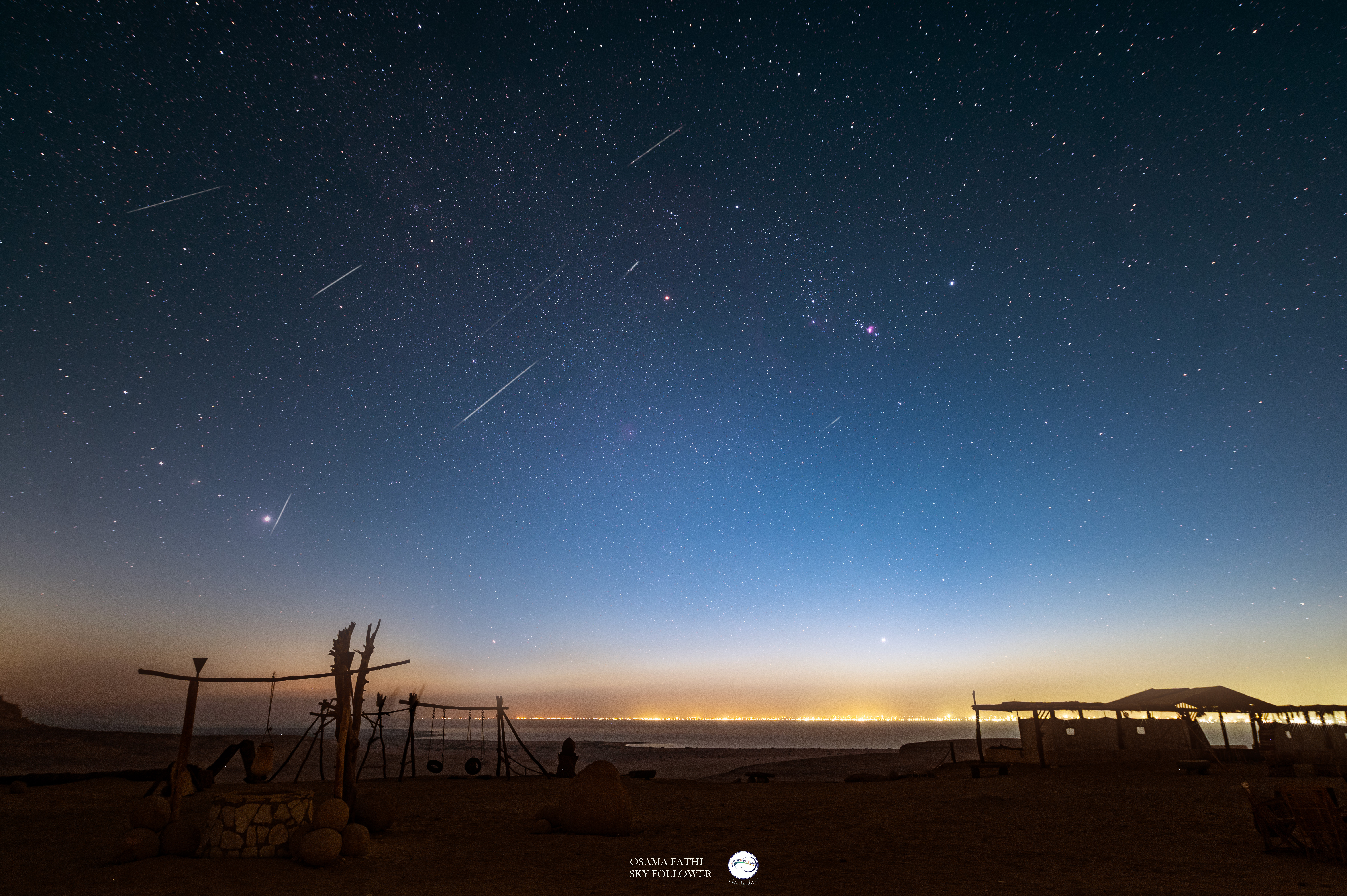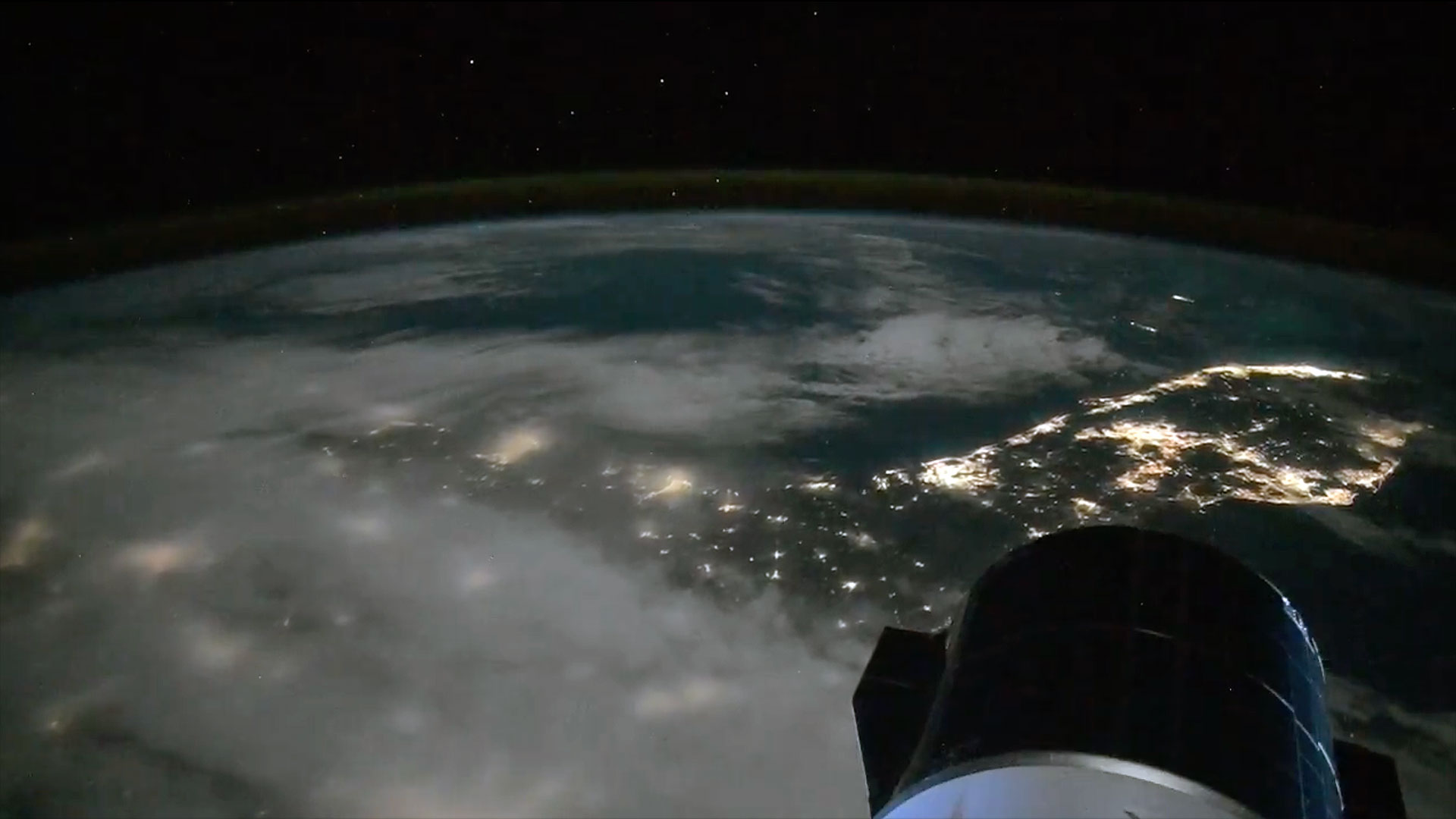Orionid meteor shower 2025 lights the night sky over Egypt in stunning photo
The Orionid meteor shower hit its peak during the dark nights surrounding October's new moon phase.
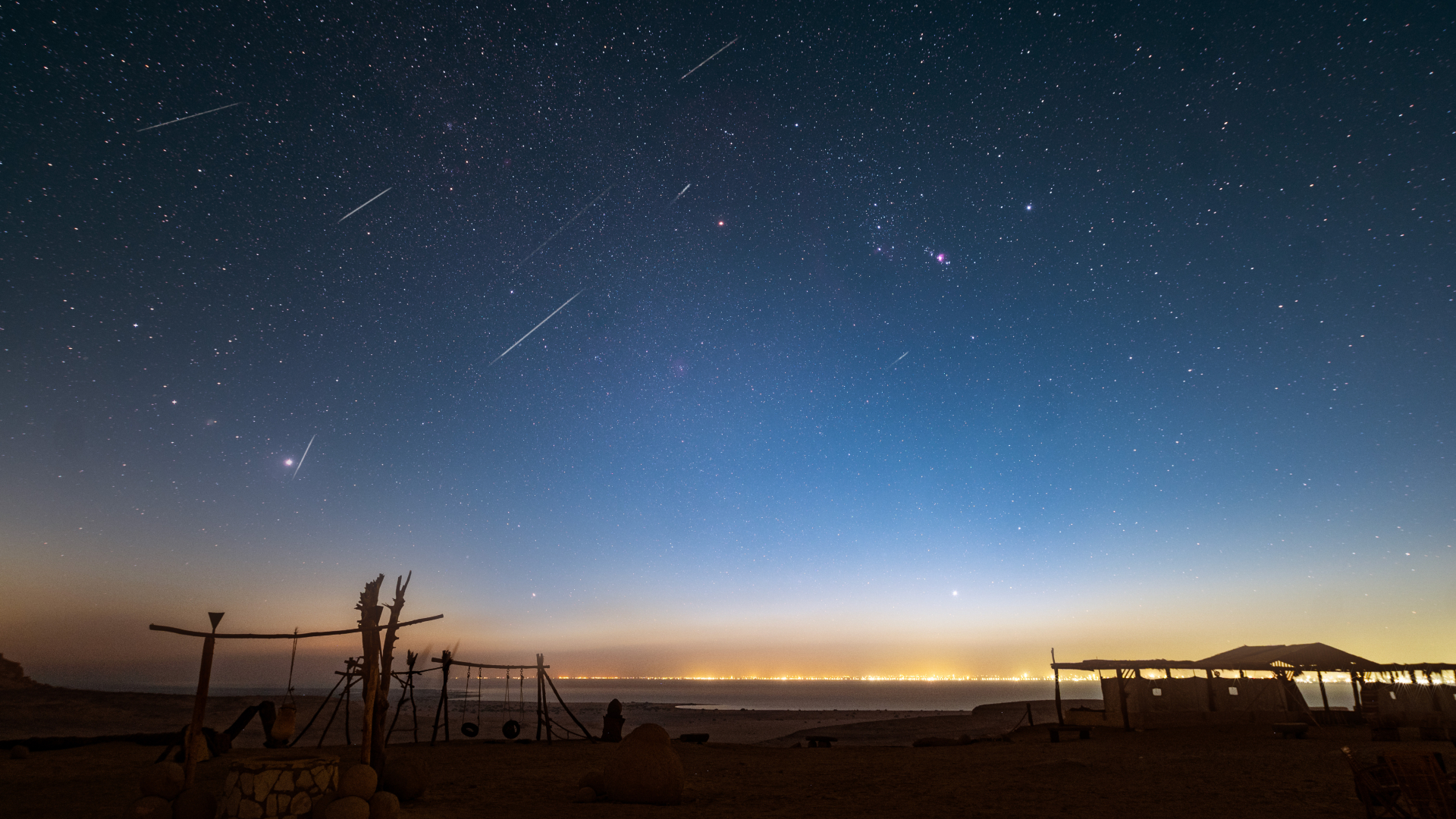
The Orionid meteor shower peaked on the nights of Oct. 21-23, delighting lucky stargazers with a gorgeous natural fireworks display as debris from Halley's Comet collided with Earth's atmosphere to create fiery shooting stars in the night sky.
Photographer Osama Fathi was among these lucky skywatchers, and captured a spectacular view of Orionid meteors streaking through the sky over Lake Qarun in Egypt on Oct. 19, as the shower ramped up activity ahead of its 3-day peak.
"This composite image combines a few meteor frames captured over three hours from Qatrani, near the northern edge of the lake," Fathi told Space.com in an email. "Out of more than 200 photos taken during the session, only a handful of bright meteors aligned gracefully near the constellation Orion — visible at the center right of the frame."
Fathi's composite skyscape was created by combining a three-minute exposure of the night sky with multiple 10-second shots of meteors captured using a Nikon Z6 camera fitted with a 14-24 mm Nikkor lens.
The peak of the 2025 Orionid meteor shower coincided with October's new moon phase, which presented stargazers with a magnificently dark night sky in which even the faintest shooting stars could be spotted flaring to life against the starfield beyond.
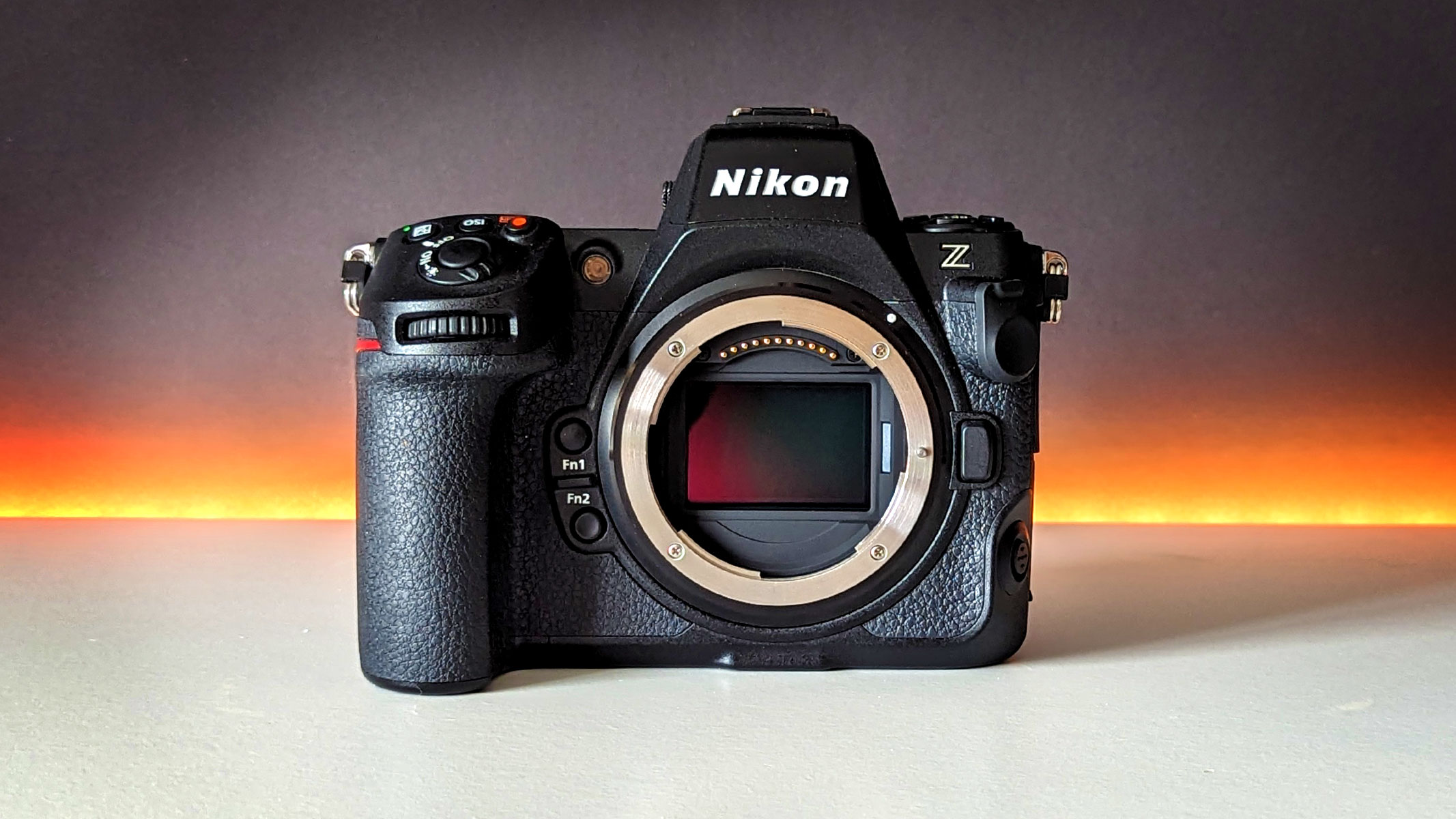
The Nikon Z8 excels in just about every department and we rate it as the best overall camera out there. It features a full-frame 45.7MP sensor, 8K video capabilities, excellent low-light performance, very high FPS burst speed and more. It is pricey, but you get a lot of bang for your buck. Check out our Nikon Z8 review for a more in-depth look.
If clouds conspired to ruin your view during the Oct. 21-23 peak, there's no need to worry, as there'll be plenty more shooting stars to see in the coming days, according to Robert Lunsford of the American Meteor Society. "Rates will fall very slowly after these dates so the mornings of October 24-26 will still provide hourly rates in excess of 10 per hour when viewing from rural dark skies," Lunsford told Space.com in an email. "Note by then the radiant will have moved eastward into western Gemini so folks should not be surprised to see these meteors shooting from that constellation instead of Orion".
Photographers interested in capturing their own shooting stars should check out our guide to imaging meteor showers, along with our roundups of the top cameras and lenses for astrophotography.
Breaking space news, the latest updates on rocket launches, skywatching events and more!
Editor's Note: If you would like to share your astrophotography with Space.com's readers, then please send your photo(s), comments, and your name and location to spacephotos@space.com.
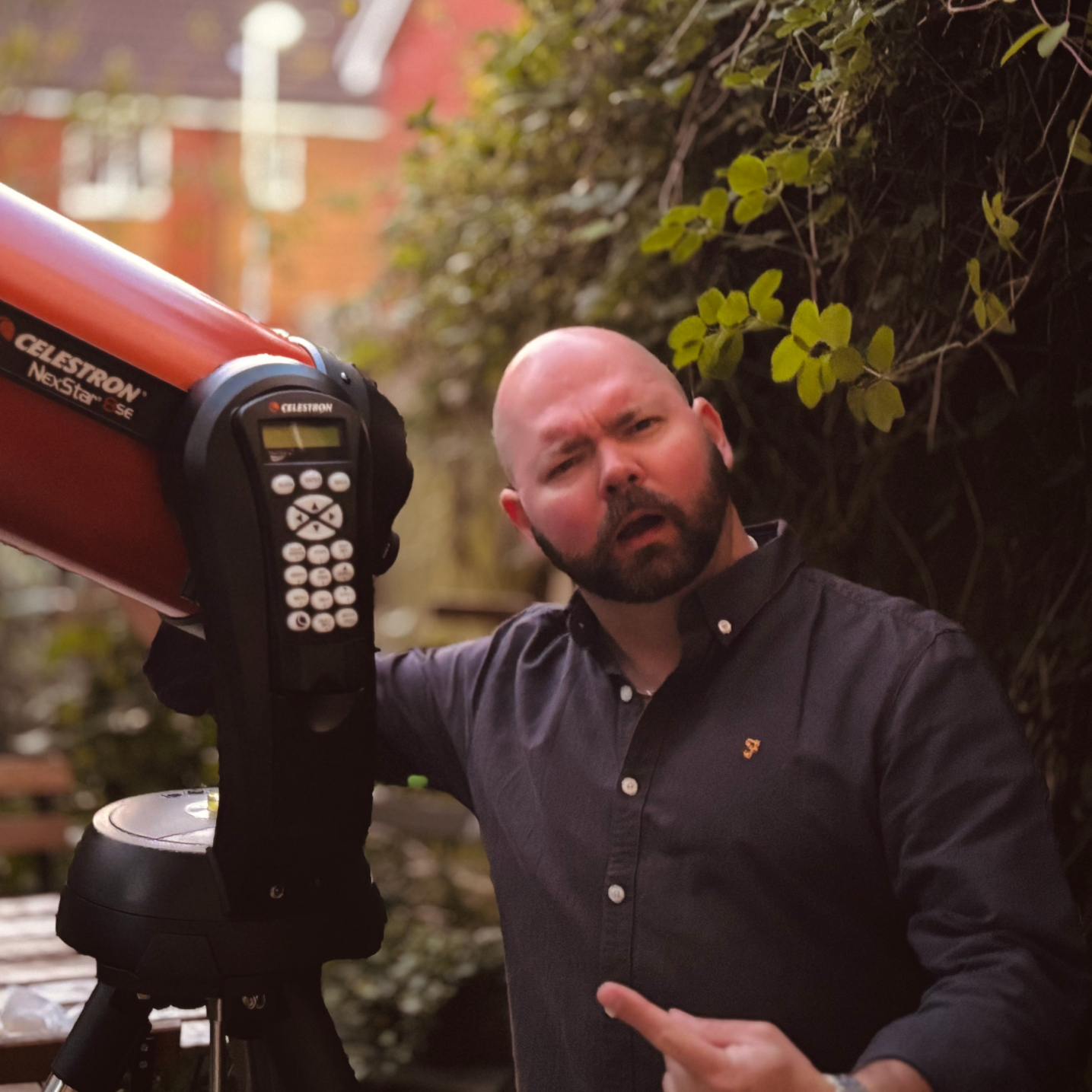
Anthony Wood joined Space.com in April 2025 after contributing articles to outlets including IGN, New Atlas and Gizmodo. He has a passion for the night sky, science, Hideo Kojima, and human space exploration, and can’t wait for the day when astronauts once again set foot on the moon.
You must confirm your public display name before commenting
Please logout and then login again, you will then be prompted to enter your display name.
